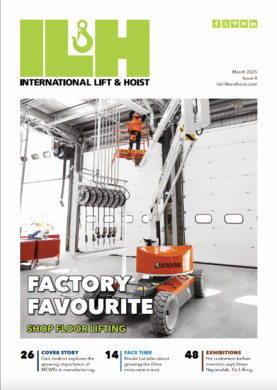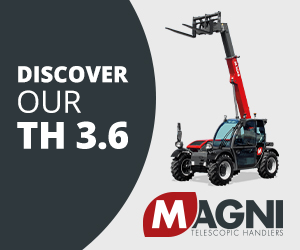)
Aiming for zero accidents and injuries
Ross Moloney, CEO of Lifting Equipment Engineers Association (LEEA), makes a rallying call for achieving zero accidents and injuries from working at height.
Safety underpins everything LEEA has been doing throughout its history and will continue to do going forward, with zero accidents and injuries from working at height being our prime goal. Rather than regarding this as an unrealistic ambition or fanciful notion, we must make it a reality. Increasing industrialisation, urbanisation and economic growth around the world is generating more lifting activity and therefore more risk. Many of the environments in which lifting takes place exacerbate the risks such as busy construction sites, wind turbines in the North Sea or nuclear plants.
Safe practice is a moral cause with the impact of accidents and injuries potentially being devasting for people involved and to the businesses they work in. It is also an economic issue because it builds resilience in the supply chain in all sectors. Both of these cases make it essential to take every possible step to reach a zero accidents and injuries, starting with encouraging industry to invest in efficient material handling equipment for safe operations and minimal human loss. Automation, autonomous cranes, anti-collision technology artificial intelligence, machine learning, remote operation, all contribute from a technological standpoint to safe operation and separating people from risk.
Equally important however is the adoption of a safety culture, not only among those who actually use, or are in proximity to, lifting equipment but also among senior management because they, ultimately, will be the ones with the legal obligations and culpability for any practice that is unsafe. A safety culture can be instilled through a better trained workforce at all levels. There are few excuses today for not improving knowledge and learning techniques that will lead to safer practice, with more courses available that are more accessible than ever through online learning. Moreover, we now have the opportunity to start recruits with the solid foundation of a lifting apprenticeship that ensures they carry best practice throughout their career, rather than picking up unsafe habits from older colleagues.
Government and legislation of course have a vital role to play on a macro level. One only has to look at the noticeable decline in the number of workplace fatalities in the UK since the introduction of the Health and Safety at Work Act in 1974 to see the positive impact that bringing a safety culture fully into national legislation can have. Regulations have been introduced around the world to further minimise accidents and injuries. But these will not always be aligned on a global basis and there will be gaps in governance, legislation and regulation. What is required is a benchmark standard around the world that gives international workers and business the assurance of safety.
This is where a globally recognised and respected association such as LEEA comes to the fore. For example, the latest version of the COPSULE can be downloaded for free at leeaint.com. This is a recommended Code of Practice, providing expert guidance on safe lifting practice. It offers authoritative information written by impartial industry experts, up to date industry practice and globally applicable guidance. The Association is planning to develop the COPSULE to make it even easier to use.
One of the biggest leaps in achieving zero accidents is having a recognisable global benchmark of best practice and safety. Look for the LEEA logo and that is what you will find, because it assures operational excellence and safe practice. So, it makes sense for it to become wider spread.
By encouraging more lifting equipment providers, service companies and individuals to become members and earn the audited excellence of the LEEA badge, we can more easily normalise global best practice. This is why we are looking to quadruple membership numbers to 5000. A bigger membership will not only reach more people, companies and organisations, but will substantiate further LEEA’s growing influence when making the argument for safe practice with legislators around the world.
LEEA is a safety organisation and together with the Lifting Industry we must not relent in striving to achieve the goal of zero accidents and injuries. Industry should collaborate wherever it can to promote this goal and Global Lifting Awareness Day, which this year takes place on 13 July, is a great example of how, through industry wide co-operation, the message of safety can be broadcast across the broadest possible spectrum.











